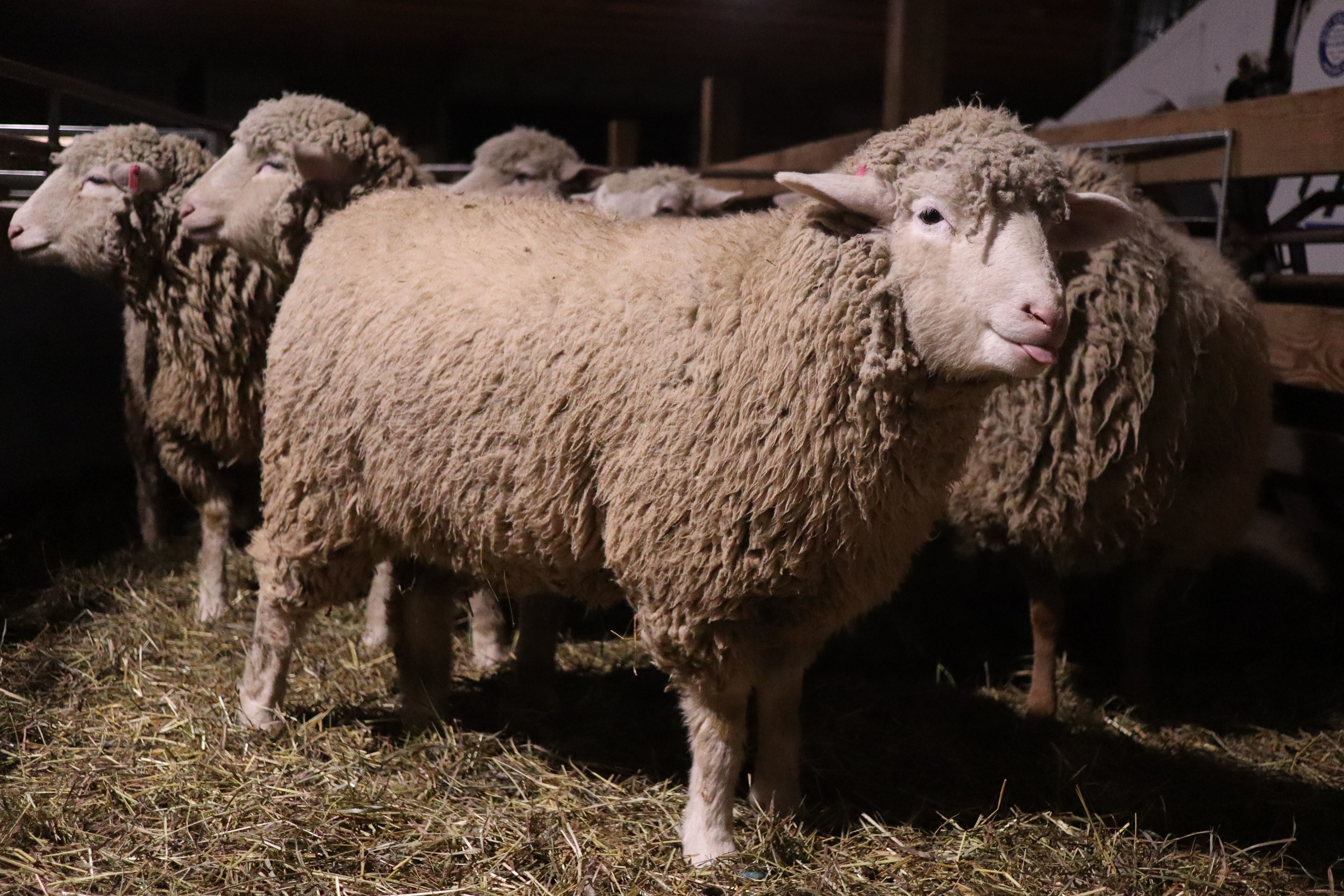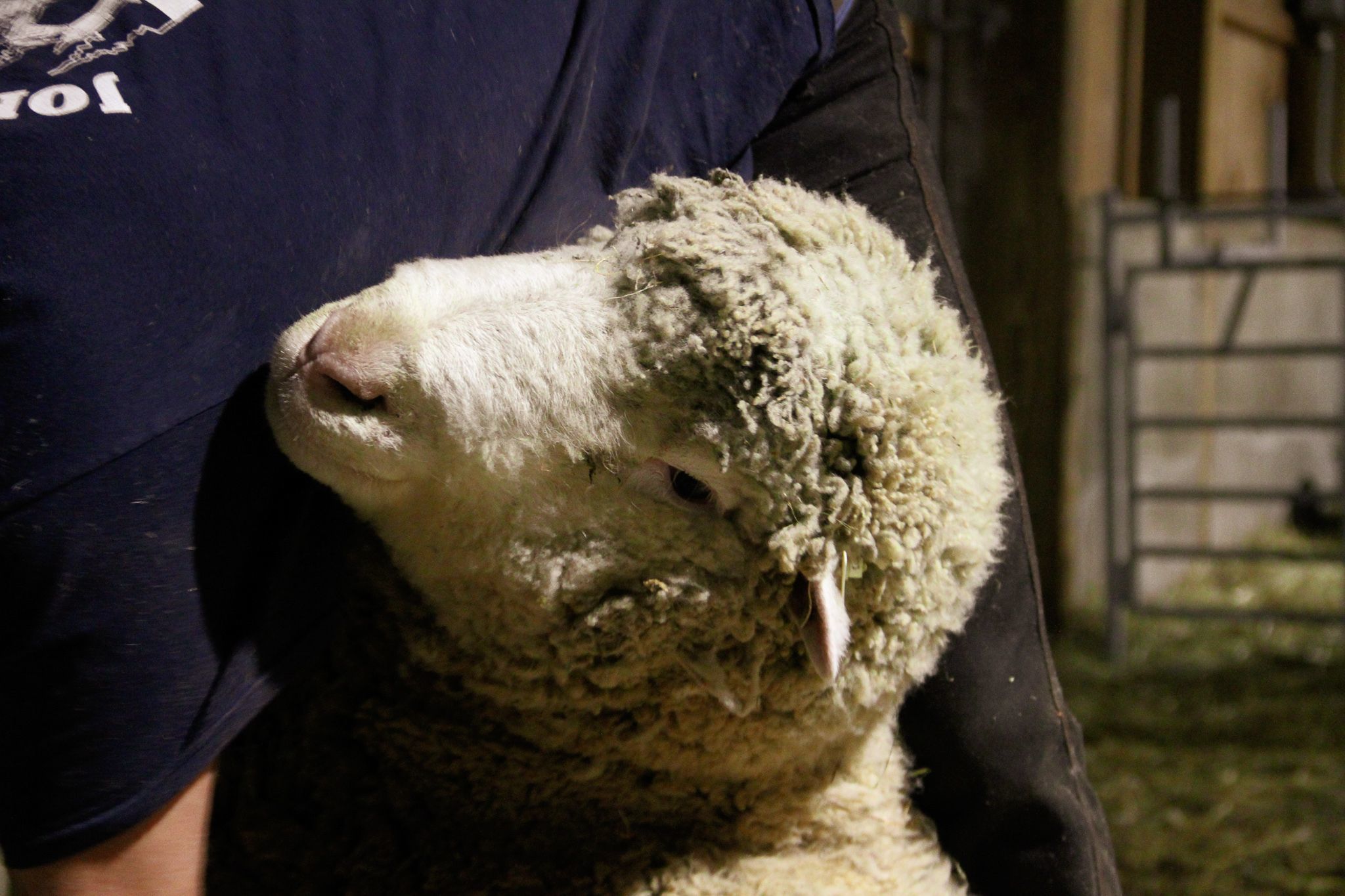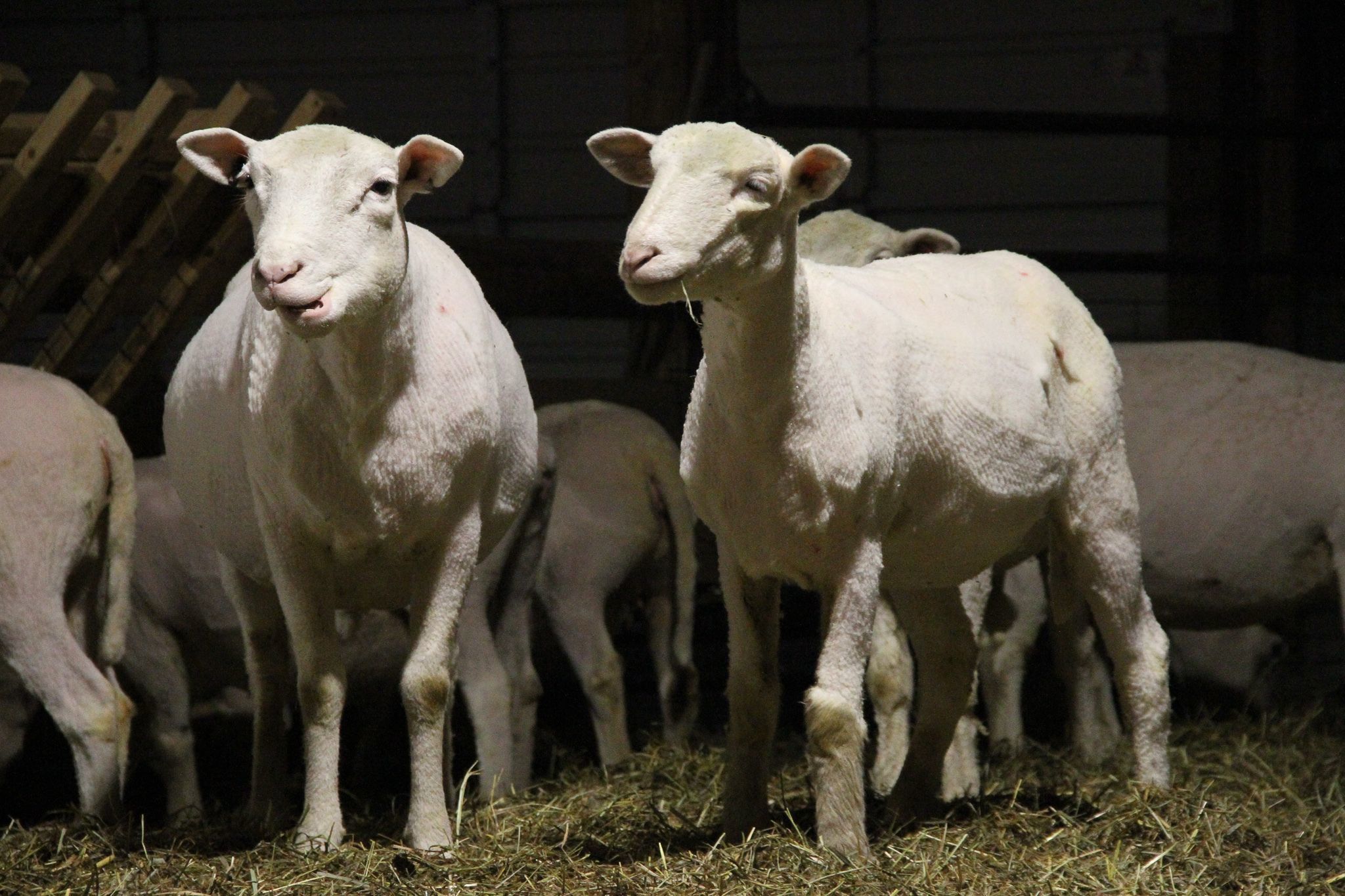Shearing Since 3500 B.C.E.
by Suzy Konecky, Manager of Individual Giving and Stewardship
Part of the power of food and agriculture is that it connects people across time and space. Practicing agriculture—participating in the systems and traditions that people have used for thousands of years—weaves us into the rich tapestry of production spanning centuries and continents.
On a cold spring morning about a decade ago, I was seeding in a greenhouse. I was managing a small vegetable farm and, for the first time in my life, was responsible for the growth of these little plants. I dropped each seed into the soft moistened soil and thought: every spring, in every city, in every state in this country and country across the world, millions of people drop little seeds into moistened soil.
A sure sign of impending spring is when sheep are shorn. Raising and shearing sheep is one of the oldest agricultural practices; humans have been shearing sheep since around 3500 B.C.E. when we began spinning their wool for clothes. Over these thousands of years, sheep have evolved with the tradition of shearing. Today, millions of sheep are shorn each year. Whether or not the wool is harvested for use, sheep need to be shorn to keep them comfortable in the hot summer months, to prevent illness (overgrown wool can harbor parasites), and to prepare ewes for lambing.
At Glynwood, our 30 sheep were shorn a couple of weeks ago in preparation for lambing next month. Shearers are likely working seven days a week this time of year, so scheduling a time for shearing can be challenging. Our shearer, Aaron Loux, came in the evening and worked from 6-9pm after a day of shearing on another farm.
One by one, he gently and skillfully held each animal, moved her around so that he could access every part of her fleece, all the while keeping the blade moving along her skin. The process was graceful. Aaron moved quickly and the large animals seemed to follow his lead. He generally started with their bellies, moved to their tails and legs, flipped them to each side, made a quick pass over their foreheads, and then finished up with their backs. When he released each animal she jumped up, and some had a fleeting moment of looking back to see their coat left behind. Nicole Scott, Glynwood’s livestock manager, filled the mangers with hay so that the sheep could enjoy a delicious meal following their shear.
There is shared knowledge and history and tradition here. Whether we are taught these traditions by our families, friends, or other mentors, we are undeniably connected. In many respects, this shared experience of producing food is about what it means to be human. Throughout most of history, producing food was as commonplace as consuming it. Yet relatively so few people participate in agriculture today, particularly in this country, that the traditions and practices can feel more like a quietly shared song that has been sung for millennia.
Working in a barn at night when it’s dark and cold, and the wind is whipping outside, the timelessness of the work isn’t usually top of mind. Farming is rarely that romantic. Yet we are lucky when we can step back and remember the thousands of years and millions of sheep and every farmer who looked at their freshly shorn animals and thought: now we’re one step closer to spring.
Back to News & Notes






